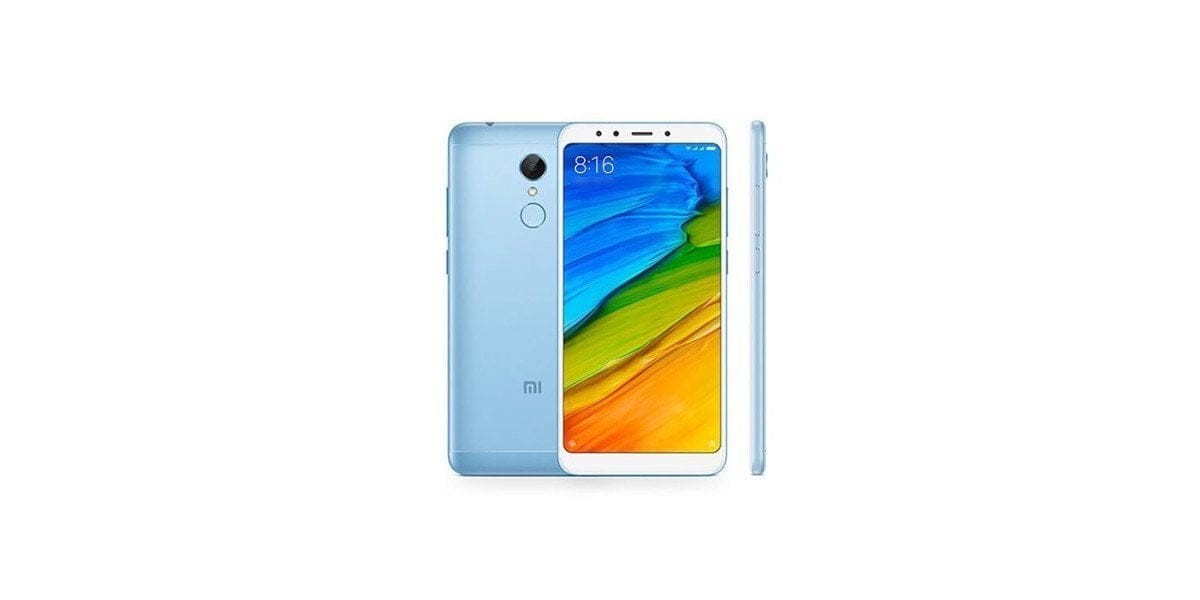Xiaomi Redmi 5 (Plus)
After many previous leaks, Xiaomi has officially presented the two new Xiaomi Redmi models, the Redmi 5 and Redmi 5 Plus. The Xiaomi Redmi models are known for offering the usual good Xiaomi processing quality and appropriate hardware equipment for less than 200 €. How the two smartphone models are equipped, how they differ and what the price and availability are, more on this in the following sections!
Update (08: December 2017)
In the meantime, the first AnTuTu benchmark results have appeared on the web. Accordingly, the Redmi 5 achieves around 55.000 points, while the Redmi 5 Plus around 61.000 points. As expected, the difference to both models is only extremely small, even in the benchmark, which is why you will hardly notice a difference in everyday use. If you are faced with the purchase decision, you should above all pay attention to the extent to which you personally need a larger and higher-resolution display and how important a dual-band WLAN is.

Display
A trend this year are smartphones with high-resolution displays in 18: 9 format. The two Redmi 5 models are also equipped with such an 18: 9 display. The display of the Redmi 5 has a display diagonal of 5.7 inches and has a HD resolution of 1440 x 720 pixels. The point density is 282 PPI. The Xiaomi Redmi 5 Plus, on the other hand, has a slightly larger display, with a diagonal of 5.99 inches. The resolution is 2160 x 1080 pixels, resulting in a point density of 403 PPI.
Despite the large display diagonal, smartphones in the 18: 9 format are comparatively compact and in terms of size are based on smartphones with a 5.5 inch display in the 16: 9 format. The contrast ratio of both displays is 1000: 1. The luminance of both models is extremely high at 450 nit, which means that readability should hardly be impaired even on sunny days. The Redmi 5's display covers 72% of the NTSC color space. The display of the Redmi 5 Plus covers the NTSC color space to 84%. With MIUI 9, a night and reading mode as well as extensive display correction options are implemented on the software side.

Processor and memory
The two new Redmi models also differ in terms of processor and memory equipment. The smaller Redmi 5 is equipped with a Qualcomm Snapdragon 450 processor, which belongs to the lower middle class. The processor is made up of 8 Cortex-A53 processor cores that clock at up to 1.8 GHz. The processor graphics is an Adreno 506 GPU. The Xiaomi Redmi 5 is one of the first mobile devices to be equipped with the processor, which was only introduced in June 2017. The memory configuration amounts to either a 2GB or 3GB RAM (LPDDR3) and a 16GB or 32GB eMMC5.1 flash memory. How the new hardware equipment performs in the Praixs will have to be shown in the test. However, one can assume a system that is easy to use.
The Xiaomi Redmi 5 Plus has instead installed a Qualcomm Snapdragon 625 processor, which was released in early 2016 and is already in other Xiaomi smartphones, such as the Xiaomi Note 4 Redmire or the Xiaomi Mi Max 2 has been used. This is also an octa-core processor with 8 Cortex-A53 processor cores clocking up to 2 GHz. As with the smaller Redmi 5, the processor graphics is an Adreno 506 GPU. There are further differences in the memory equipment, which in this model comes with either a 3GB or 4GB main memory (LPDDR3) and a 32GB or 64GB eMMC5.1 flash memory. One can assume that the jump in performance from the weaker Snapdragon 450 to the slightly faster Snapdragon 625 will hardly be noticeable, at least in everyday life. The memory of both smartphones can be expanded using a microSD memory card!
Camera
There is agreement regarding the camera equipment. Both models offer a 12 megapixel main camera with a (as yet) unspecified image sensor. However, the pixel size of the sensor is known, which Xiaomi specifies as 1.25 μm, which in combination with the 12 megapixel resolution of the sensor suggests a Sony IMX286 image sensor. The manufacturer specifies the aperture as f/2.2. An LED flash is present on both models, with the Redmi 5 Plus using a dual-tone LED flash. The autofocus is of the “PDAF” type. The front camera has a resolution of 5 megapixels. The "Smart Beauty 3.0" mode allows different beauty filters to be placed over the recording.

Design, battery and others
Both models come in a high-quality metal housing. The Redmi 5 model series is available in the colors “gold”, “light blue”, “rose gold” and “black”. The case dimensions of the Redmi 5 are 151.8 x 72.8 x 7.7 mm, those of the Redmi 5 Plus are 158.5 x 75.45 x 8.05 mm. The weight is 157g or 180g. Other features include a rear fingerprint scanner, which is located below the main camera. The USB connection option is of the Micro-USB type. A 3.5 mm audio jack is available. There are two microphones in total. Another feature of both models is an infrared transmitter unit. The sensory equipment includes a distance sensor, an ambient light sensor, an acceleration sensor and a gyroscope. The Redmi 5 Plus also offers a Hall sensor.

The Redmi 5 can use the 2.4 GHz WLAN and the Redmi 5 Plus as well as the 5 GHz WLAN. Bluetooth is supported with version 4.2. GPS, GLONASS and Beidou are supported for position determination and navigation. As dual SIM smartphones, both devices can be equipped with two nano SIM cards. 4G LTE can only be used to a limited extent in the mobile network due to the lack of band 20. The battery of the Xiaomi Redmi 5 has a capacity of 3.300 mAh. The battery capacity of the Xiaomi Redmi 5 Plus is 4.000 mAh.
Prices and availability
In China, the Redmi 5 (2GB) is already available from 799 yuan, which corresponds to about 102 €. The 3GB model costs 899 yuan, the equivalent of just under 115 €. If you choose the larger Redmi 5 Plus, the 3GB version starts at 999 yuan, around € 130. The Redmi 5 Plus with 4GB of RAM costs 1299 yuan, which corresponds to a price of 166 €. The first import shops have already listed both smartphones. The import prices are currently still slightly above the China prices. Shipping is expected from the end of December. As soon as we receive a test copy, the detailed test report will follow here!






Erik
8. December 2017 12 to: 16
A really bad decision on the Redmi 5 to drop the two-channel WiFi. The plus has it, but then it is too big for me. Otherwise, the Specs read really well.
zerk
10. December 2017 22 to: 32
No LTE band 20. I'm out.
Markus
16. December 2017 11 to: 50
What do you expect? That was clear that the smartphone at the beginning is only without the band 20. Even with the Europa Start it will take some time before the Xiaomi Phones are released with all frequency bands. Give them 3 months and you can order it via Amazon with band 20.
Markus
16. December 2017 11 to: 48
That's what I call Lame to build such an old processor in the Redmi 5 Plus. This is just another gap filler for the next generation. I had hoped for more and would rather wait for the Redmi Note 5.